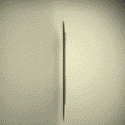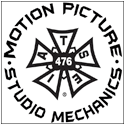
In many ways, filmmaker DP Carlson has been working on Joe Frank: Somewhere Out There — a 2018 documentary about one of the greatest radio storytellers in the history of American media — since the 1980s.
“The Sunday night ritual was to hang out and listen to Joe Frank’s show with my fellow droogies in an apartment in Albany Park,” Carlson recalls. “I kind of idolized him, like we all did.”
Carlson and his friends were hearing the initial stages of a revolution that had started on LA’s KCRW and expanded to Chicago’s WBEZ.

Well-known artists like Harry Shearer, Ira Glass, and David Cross were also in on the movement. They are among several interviewees featured in the film, which Carlson has self-financed except for a few remaining expenses that will, hopefully, get funded by a current Indiegogo campaign.
The effort not only reflects the extent of a fan’s devotion, but also serves as a testament to the importance of Joe Frank’s work.
“All the pain, all the suffering, all the good, all the bad,” says Carlson. “Joe knew how to put it on the same track and communicate in these wonderful audio landscapes.”
From 1986 to 2018, Joe Frank created some of the trippiest radio in the history of American media. Familiar and sensational, hypnotic and intense, soothing and self-conscious, he earned a legion of fans by writing and narrating four series — Work in Progress, In The Dark, Somewhere out There, and The Other Side — that changed everything.
In one show, he describes an urgent a trip to the toilet during the middle of a cocktail party with mesmerizing grace. In another, he recounts a fistfight that leads to a friendship between a man who lost a beloved green Cadillac and the guy who stole it, and that’s just the beginning of the episode.

“Green Cadillac felt like a Hollywood screenplay,” says Carlson, who often uses this particular show to help newcomers get acquainted with Joe Frank. “You could follow these characters around.”
Another one of Carlson’s personal favorites, The Loved One, is “a great monologue about a guy born so perfect that everybody falls in love with him.”
“It starts off being very funny, and then becomes horrific,” he continues. “When I was in my 20s … there was something about that one deep down that worked on me.”
All of the stories are narrated by the undeniably compelling voice of Joe Frank, layered over soothing drones and looping music created by some of the best audio engineers in the business.

Recordings of phone conversations between Frank and New York actors Larry Block and Debi Mae West — who initially did not realize that they were being recorded — frequently enhance the narratives.
The intimacy of their dialogue helps Frank blend fact with fiction in a style that was inspired by an incident that happened when he was a kid in Long Island.
“Joe heard a vicious argument between his mother and his stepfather,” says Carlson. “He started writing it down because he realized that it could be turned into art.”
Other events in Joe Frank’s personal life include a horrendous operation on his clubbed foot, a painful cobalt-radiation treatment for testicular cancer, the loss of two kidneys, and a battle with bladder cancer. All of these occurred after he escaped from Nazi-controlled France with his parents when he was a toddler.

Along the way, he attended the Iowa Writers Workshop and started a career as an English Teacher at a private school in New York before moving into radio, where memories of the students’ parents — “who had shit going on,” says Carlson — helped drive his signature creativity.
Although Frank earned success partly by exploring deeply personal issues, people close to him were reluctant to put a microphone on his life.
“Everybody thought it was a privilege to know Joe Frank,” says Carlson. “I think people were very protective of him and they didn’t want to spoil their relationship with him by talking about him.”
“But once Joe gave sort of the high sign on the picture,” he continues, “it was very easy to hook up with scores of people who were dying to talk about Joe.”

Carlson started making movies when he was eight-years-old. By the time he entered Columbia College on a merit scholarship, he had completed nearly 40 of them. His current portfolio includes several features and TV series, as well as the award winning shorts, Sailorman and Homeless 99.
He completed first real film, I Was There When the Blues Was Red Hot, while working at Wild Onion Films, a collective near Cabrini Green that contributed work to Saturday Night Live. It featured legendary musicians like Kinzie Report and Fernando Jones.
“It was great,” he says, “but I ran into music licensing rights.”
Interestingly enough, clearing music rights is pretty much the only task that needs to be completed before releasing Joe Frank: Somewhere Out There. To help Carlson get it done, click here.















